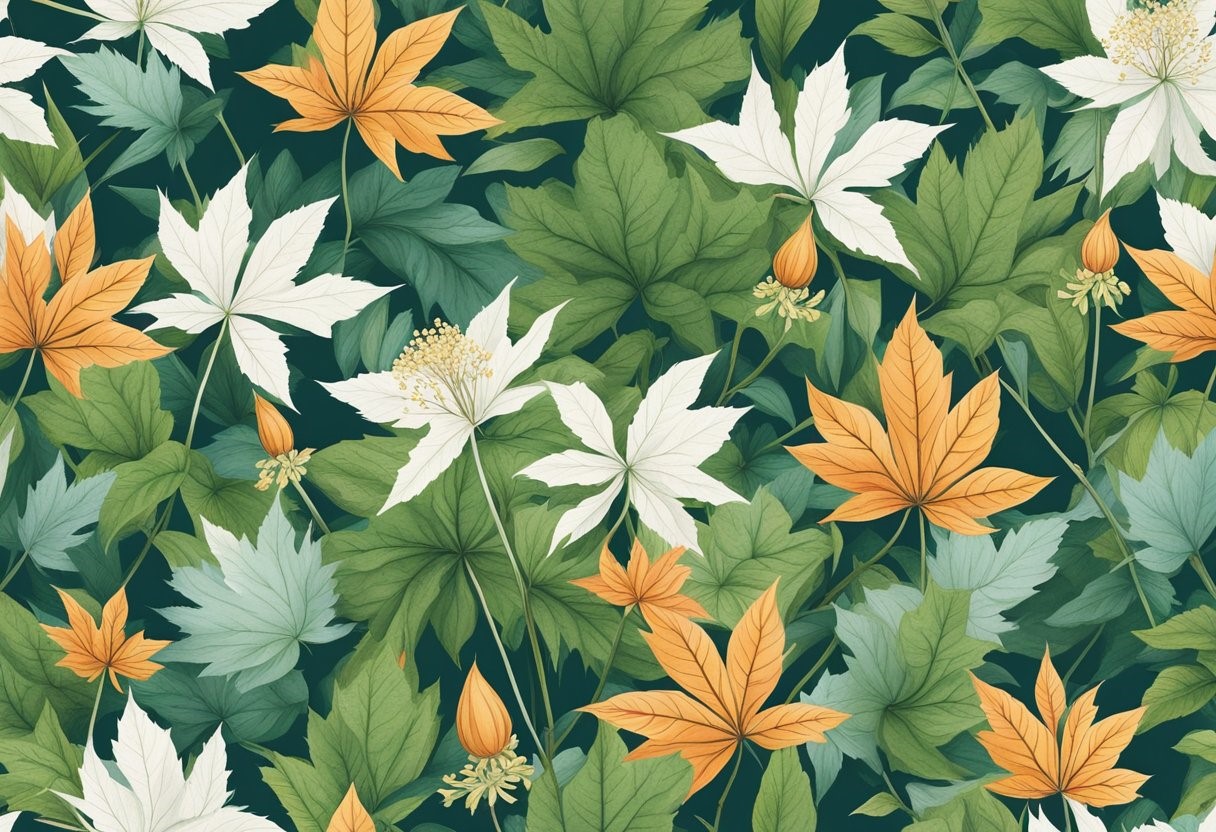
White Widow has a complex history in Canada, from its introduction to its integration into cultural practices, shaping the Canadian cultural mosaic.
White Widow is a cannabis strain, renowned globally and within Canada, for its potent effects. It was likely introduced to Canada during the late 20th century when global cannabis trade and cultivation practices expanded. Your understanding of its origins is crucial, as it highlights the globalization of cannabis culture and its eventual assimilation into Canadian society.
Among the Indigenous peoples of Canada, including First Nations, Inuit, and Métis, traditional ceremonies have deep roots in cultural practices. While cannabis was not historically used by these groups—given that it was introduced post-colonial contact—strains such as White Widow may have found a place in modern practices. Nonetheless, it is important to note that White Widow is not traditionally associated with Indigenous ceremonies which often use sacred plants like tobacco, sweetgrass, cedar, and sage.
Over time, White Widow has contributed to Canada’s cultural identity, especially after the legalization of cannabis in 2018. While it doesn’t carry historical significance for Indigenous cultures, it reflects modern Canadian society’s embrace of diverse influences and the expansion of what can be considered a part of Canadian heritage. This strain has become a symbol of Canada’s progressive stance on cannabis and is part of the country’s evolving cultural identity.

The White Widow in Canada is not just a strain of cannabis; it reflects a complex interplay of cultural beliefs, symbolism, and social recognition within various communities. This exploration will delve into its presence in artistic expressions, the significance of its symbols in indigenous accessories, and its place in the context of political and social acknowledgment.
White Widow has been a recurring motif in Canadian art, notably influencing both visual and performance arts. You’ll find that artists often leverage its striking imagery to discuss broader themes of resilience and survival, emblematic of the strain’s renowned potency. Community events may also feature White Widow to underscore a shared cultural identity, especially within societies that have a connection to cannabis cultivation or advocacy.
Indigenous accessories, such as headbands or jewelry, can bear symbols representing the White Widow strain. These items are often embedded with a deeper meaning, connecting to aspects of indigenous history and cultural beliefs. The strain’s name itself—White Widow—may symbolize powers of healing and protection, translating into a significant cultural emblem within these communities.
In the realms of political discourse and social movements, White Widow can be seen as a signifier of changing attitudes towards cannabis. White Widow often emerges in discussions around treaty rights and reconciliation efforts with Indigenous peoples. Moreover, it’s a cultural touchstone in contemporary dialogues around legalization and the acknowledgment of cannabis in societal norms.

Your exploration into the White Widow strain reveals a complex genetic heritage and a broad spectrum of effects that have cemented its status as a staple in both recreational and medicinal contexts across Canada.
White Widow is a hybrid strain that skillfully balances Indica and Sativa genetics. Originally bred in the Netherlands, this strain has entrenched itself as a global icon among cannabis varieties. The genetic lineage of White Widow is noteworthy; it’s a cross between a Brazilian Sativa landrace and a South Indian Indica. The result is a strain that offers you a unique blend of euphoria and energy, while still providing the relaxing effects typically associated with Indicas.
The genetic balance makes White Widow particularly versatile, suitable for your enjoyment at various times of the day.
In terms of recreational use, White Widow may deliver a powerful burst of euphoria and happiness, which is why it’s commonly chosen by you for social gatherings or creative endeavours. This cultivar is praised for its ability to provide an uplifting experience without diminishing your energy.
From a medicinal perspective, Canadians have reported using White Widow to alleviate symptoms of chronic pain. The strain’s balanced nature means it can also be helpful if you’re coping with stress or looking for mood enhancement.
The White Widow cannabis strain is renowned for its potent effects that may include a burst of euphoria and energy, followed by a sense of relaxation. It’s a balanced hybrid known to enhance conversations and creative pursuits.
The White Widow strain first gained prominence in the 1990s and quickly became popular in Canadian cannabis circles for its strong effects and ease of growth, even in varied climates.
This strain was named ‘White Widow’ because of its dense trichomes covering the buds, giving them a whitish appearance, and the ‘Widow’ part of the name is thought to reference the powerful effects that can ‘knock out’ users.
You might use the White Widow strain for its potential recreational and medicinal benefits. It is often sought after for mood elevation, stress relief, and to counteract fatigue.
The White Widow strain is believed to have been developed by a Dutch grower in the early 1990s, a legacy that has spread across the globe, including to Canada.


WE ARE EVERY GROWERS ONE STOP SHOP TO ACQUIRE PREMIUM CANNABIS SEEDS FOR SALE IN THE USA, CANADA AND AUSTRALIA
Farmers Lab Seeds 2024,
All Right Reserved
Seeds are sold as novelty items, souvenirs, and collectibles. They contain 0% THC. We encourage our customers to check the legislation in their Country, State, Province, and Municipality prior to purchasing items from our store. We do not provide growing information.
All seeds are sold as hemp, and lab tested under 0.3% THC. This product is not for use by or sale to persons under the age of 21. This product should be used only as directed on the label. It should not be used if you are pregnant or nursing. Consult with a physician before use if you have a serious medical condition or use prescription medications. A Doctor’s advice should be sought before using this and any supplemental dietary product. All trademarks and copyrights are property of their respective owners and are not affiliated with nor do they endorse this product.
These statements have not been evaluated by the FDA. This product is not intended to diagnose, treat, cure or prevent any disease. Individual weight loss results will vary. By using this site, you agree to follow the Privacy Policy and all Terms & Conditions printed on this site. Void Where Prohibited by Law.